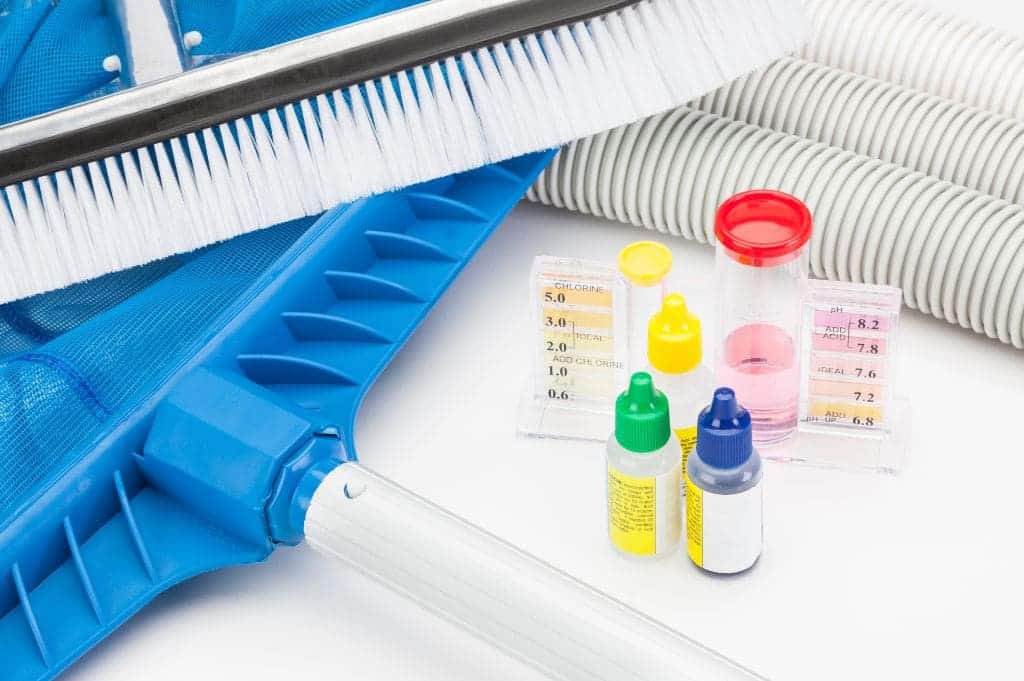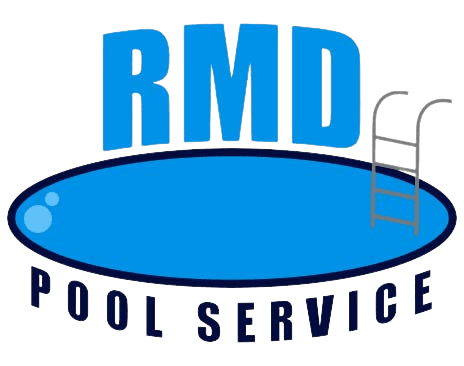
You’re not alone if you’re wondering what chemicals to add to a new pool. Setting up a new pool is an exciting moment. Whether for weekend family fun or a place to unwind after a long day, getting your pool water chemistry right is essential for safety and enjoyment. So, let’s talk about what chemicals to add to a new pool and why it matters.
At RMD Pool Services, we know how overwhelming it can be to figure out which pool chemicals to add first. Let’s break down what you need and how to treat pool water for the first time.
Why Proper Pool Chemical Balance Matters
Adding the right pool chemicals ensures that your water is safe, clear, and free from bacteria or algae. It also protects your pool system and surfaces from damage over time.
Neglecting to treat your pool water properly can lead to murky water, skin irritation, or costly repairs. That’s why it’s essential to get it right from the start.
Step-by-Step Guide on What Chemicals to Add to a New Pool
1. Test the Water First
Before adding any pool chemicals, test your water’s pH, alkalinity, and calcium hardness levels. This will give you a baseline to determine which treatments are needed.
2. Balance the pH and Alkalinity
Start by adjusting the pH levels, which should be between 7.4 and 7.6. Use a pH increaser or decreaser if necessary. Alkalinity should be between 80-120 ppm.
Pro Tip: Balancing the pH first helps other chemicals work more effectively.
3. Add Chlorine for Sanitation
One of the most important swimming pool startup chemicals is chlorine. It keeps the water free from bacteria and harmful contaminants.
- Use liquid chlorine or granular shock.
- Maintain chlorine levels between 1-3 ppm.
4. Stabilize with Cyanuric Acid
Cyanuric acid helps protect chlorine from being broken down by the sun. Aim for a level between 30-50 ppm.
5. Treat for Calcium Hardness
The ideal calcium hardness range is 200–400 ppm to prevent corrosion or scaling.
6. Shock the Pool Water
Shocking the water is an essential part of new pool water treatment. It removes any organic contaminants and boosts chlorine levels.
Tip: Shock your pool in the evening for best results.
7. Add Algaecide for Prevention
Prevent algae growth by adding a quality algaecide. This is especially necessary in warmer climates.
8. Final Check and Balancing
After adding all the necessary pool chemicals, retest the water to ensure everything is within the recommended ranges.
How RMD Pool Services Can Help
Maintaining a new pool can be time-consuming, but we’ve got your back. Our professional services include:
- Weekly Pool Maintenance
- Stain Chemical Treatment
- One-Time Pool Cleaning
- Drain & Cleaning Service
- Pool Filter Cleaning Service
We make it easy to keep your pool safe, clean, and perfectly balanced.
Final Thoughts: Get Your Pool Right from Day One
Knowing what chemicals to add to a new pool is key to having a clean and safe swimming environment. By following these steps and using the right products, you’ll enjoy crystal-clear water and fewer headaches down the road.
Ready to keep your pool sparkling year-round? Contact RMD Pool Services today for reliable pool maintenance, cleaning, and chemical treatments. Let us handle the hard work so you can enjoy your pool stress-free.
FAQs About What Chemicals to Add to a New Pool
What should I do before adding chemicals to a new pool?
Before adding any pool chemicals, it’s essential to test the water for pH, alkalinity, and calcium hardness. This helps you identify imbalances and determine the right treatments to achieve sparkling, safe water.
Why is balancing pH and alkalinity important?
Proper pH and alkalinity levels protect swimmers and your pool. When the pH is between 7.4 and 7.6 and alkalinity between 80 and 120 ppm, other pool chemicals, particularly chlorine, work more effectively.
How much chlorine do I need for a new pool?
Chlorine is crucial for sanitizing your pool and keeping harmful bacteria at bay. Maintain chlorine levels between 1 to 3 ppm for clean and safe swimming water. Regular checks ensure these levels stay balanced.
What does cyanuric acid do for pool water?
Cyanuric acid acts as a stabilizer, shielding chlorine from being broken down by sunlight. Maintaining a cyanuric acid level between 30 and 50 ppm helps you retain effective chlorine levels, even during hot sunny days.
Do I need to shock my pool after filling it for the first time?
Yes, shocking your pool is highly recommended after the initial fill. It removes contaminants and boosts chlorine efficiency. For best results, shock the pool in the evening when the sun is less likely to affect the process.
What is a metal sequestrant, and do I need it?
A metal sequestrant binds with metals like iron or copper found in some water sources, preventing stains or discoloration on your pool surfaces. Using a sequestrant is wise if your water source has a noticeable metal content.
How can I control algae growth in my pool?
To keep algae at bay, use a high-quality algaecide and maintain proper chlorine levels. Keeping the pool clean and regularly shocking it will also help prevent unwanted algae blooms.
What is the recommended calcium hardness level for pools?
Maintaining calcium hardness between 200-400 ppm is essential. Proper levels help prevent scaling on surfaces and corrosion of pool equipment, both of which can lead to expensive repairs.
How frequently should I test my pool water?
Testing your pool water at least once a week is recommended to monitor and maintain balanced levels of key pool chemicals. Always retest after making significant chemical adjustments.
Can RMD Pool Services help maintain my pool?
Absolutely! At RMD Pool Services, we provide professional maintenance, chemical treatments, and cleaning to ensure your pool stays perfectly balanced, sparkling, and safe for use.
Ready to enjoy stress-free pool maintenance and crystal-clear water year-round? Contact RMD Pool Services today — let us handle the hard work while you relax and enjoy your pool.
Related Blog:
